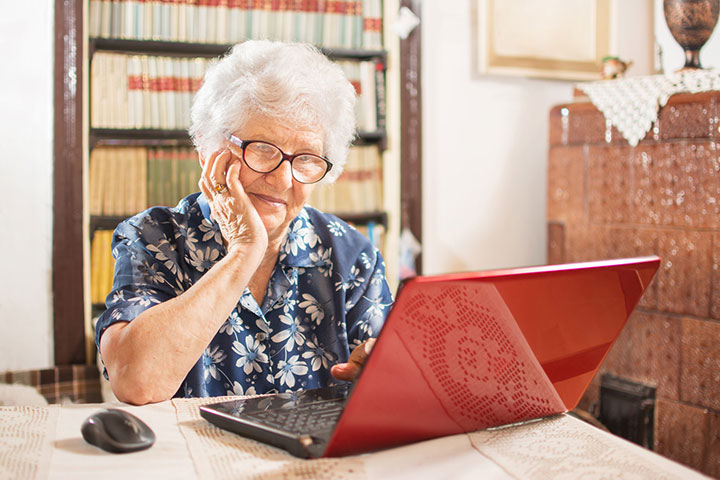A nonprofit that began with the dream of helping Holocaust survivors has expanded its sights to help stamp out the growing epidemic of social isolation. Selfhelp Community Services originated in 1936 with one goal in mind: to help people who were fleeing Nazi Germany forge new lives in their new homes in America. The group’s early founders raised and sent funds to Brussels, Geneva, Prague, Zurich, Paris, and Shanghai to buy supplies, tickets for ships, and other necessities to those stranded afar who wished to reach friendlier countries.
Now operating older adult centers across New York City, and Nassau and Suffolk counties, the organization still bills itself as “the last living relative” to that population, currently providing care and services to frail and elderly individuals who have survived the Holocaust, along with a robust combination of services to a total of 25,000 elderly residents each year.
Steady Expansion of Services
Initially concentrating on essential help with medical care and securing employment, Selfhelp has expanded its audience and offerings in its more than 80 years in operation. In the 1950s, it began a summer vacation program for refugees and their families in need of respite. In the mid-60s, it constructed affordable housing facilities for seniors, the first in New York to be built by a nonprofit organization; it now boasts 15 such structures. It also added case management programs, senior centers, retirement communities, and home health care services for older people.
Yet despite the scope and breadth of services the organization extended, Selfhelp staff became increasingly concerned with the clamor from their housebound elderly clients who complained they were finding it increasingly more difficult to make connections with other people — a difficulty often exacerbated by the fact that younger friends and family members seemed to be retreating behind impersonal technology. They reported being lonely and lethargic.
“We needed to reinfuse them with self-esteem so they could feel more interested in the world around them,” says David Dring, the former executive director of Selfhelp Innovations. “Radio, TV, and movies do not allow for meaningful exchanges between people.”
The organization’s response was to find a way to make the fearsome technology work for seniors rather than against them. The first foray was to use video cams within the senior centers—a step on the right direction, but ultimate not a good solution. “With a video, you’re still watching what others are doing, not interacting,” Dring notes.
Experimentations eventually evolved into the Virtual Senior Center (VSC), which provides homebound participants with an “all-in-one” touch screen devices with a interface that simplifies and streamlines the way they can use the service to attend interactive, video-based classes and play games with one another. The program, now available in various cities across the country, costs annually $99.99. The virtual senior center is available in Mandarin Chinese, Russian, and Korean as well as English.
Virtual Learning—And Connecting
Real-time, interactive class offerings cover about 18 categories of educational, recreational and cultural programs. The calendar of topics varies weekly and can include, by way of example, wellness and nutrition, the arts, exercise, history, food, computer skills, and more. Video chat and email are available. Each hour-long class is offered live, led by a volunteer facilitator who has a particular passion or knowledge to share. Participants can hear and talk with their classmates through video chat and email made simple to use by Selfhelp’s software interface.
In addition to the varied academic classes, Selfhelp offers what it calls “social games.” Participants can play Rummy around a virtual table—and see and hear the other players in real time, even though they may live half the world away.
Participants start out as virtual strangers, literally and figuratively, but many become true friends as they learn together and as their talks deepen. The testimonials from those who have used the service are telling and touching.
“Before I used the VSC, I was bored to death. Now, I’m alive again,” says Milton.
”When I started, everyone was a stranger to me, then we became friends,” says Emily. “Now, we’re all family.”
And Bruno also touts Selfhelp’s life-saving powers: “I’ve had a lot of health problems,” he says. “If I didn’t have the computer, I don’t know if I’d still be alive.”
But senior students—whose ages average 83 and who range from those who are complete computer novices to those who say they have “moderate” experience—aren’t the only ones who benefit. The volunteers also sing Selfhelp’s praises.
“Oh I love the participation of the seniors. They charge my batteries more than you can realize,” says one, who teaches music classes to the online learners.
“They want to be active. They want to be part of something,” says another young teacher. “And for me that’s a really positive message: You’re never too old, you’re never too anything to do anything. ‘Never quit’ is the attitude I’ve gotten from them,” he adds.
(This article has been revised since it originally published in February, 2018.)
